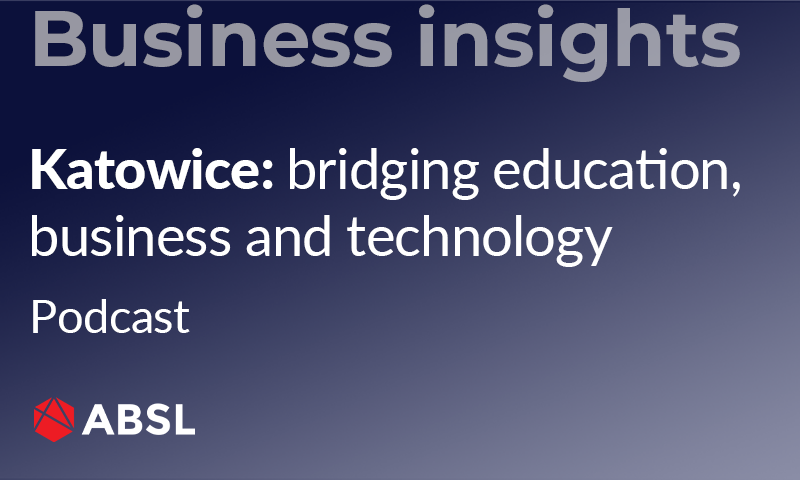Businesses must look beyond traditional ways of managing performance
In the ever-changing and complex environment, businesses can no longer solely focus on financial data to assess their performance, drive long-term strategies and generate sustainable value.
Pervasive volatility and unpredictability continuously test business resilience. In this environment, businesses not only need to respond to rapid-fire changes to survive but, perhaps most importantly, they need to take advantage of these forces to thrive.
Most recently, businesses have had to contend with the implications of the COVID-19 pandemic. But there are many other challenges, including emerging environmental sustainability regulations and changing investor sentiment, rising geopolitical rivalry and conflict, and growing consumer awareness and influence.
Against this backdrop, businesses need to be more agile, responsive, and innovative. Yet, in this business ecosystem full of surprises, many businesses still manage their performance in rigidly structured silos of command-and-control power hierarchies designed to avoid surprises. Fundamentally, there is a tension between navigating the 21st-century business ecosystem and using 20th-century management philosophies based on command-and-control.
People closest to the coalface are usually best placed to respond to these volatile and unpredictable forces. The challenge for business leaders striving for innovative, responsive organisations is to create an environment in which people feel engaged in driving business strategies. In other words, a culture of employees who are empowered, motivated, passionate and invested in their work that is driving strategy and creating value — or what we call a performance culture.
Recent findings
As the drive toward the digitisation of the economy continues to accelerate, businesses must look beyond traditional ways of managing performance to become more responsive and build their resilience, according to the new report Reimagining Performance Management based on research conducted by the Association of International Certified Professional Accountants, representing AICPA & CIMA, and the World Business Council for Sustainable Development (WBCSD).
The report shares key best practices that businesses can adopt and implement to create a performance-based corporate culture. And in doing so, it explains how the integration of talent with strategy and other “capitals” of an organization is key to unlocking successful creation of value over time. These ideas are unpacked through a series of insights from 42 finance, HR, and operational leaders in leading companies in the US, UK, South Africa, Singapore and Brazil.
It turns out that to win in the post-pandemic world, businesses must adopt new ways of managing performance that simultaneously build on the talents of their people, leverage their business model, systems, processes and procedures, and actively engage with stakeholders. Yet, creating the performance-based corporate culture needed to support this shift, drive innovation, create value and move the business forward remains a challenge for many organisations.
Thus, research identified key factors that contribute to creating a performance culture:
-
Improving accountability
Business leaders want employees to be accountable for their results. However, the research shows that many businesses still struggle to hold employees accountable. Why is that? In certain corporate environments, coercive controls fetter entrepreneurial instincts and stifle creativity. When the consequences of failure risk outweighing the rewards for success, employees avoid taking responsibility for risky challenges by negotiating activities and targets into their comfort zones. To reach challenging strategic goals, business leaders should develop enabling controls that encourage employees to confidently take on ambitious challenges.
-
Creating a clear line of sight
One of the main obstacles to increasing accountability is that employees beyond a certain management level lose sight of the connectivity between personal objectives and the business strategy. Businesses often rely on a formal process of cascading strategic objectives down the chain of command. However, this process has several flaws:
- Managers are taking a safety-first approach and choosing tactics that play to their strengths.
- Strategic ambitions get misinterpreted, especially further down in power hierarchies, leading to misguided choices of actions required for success.
- Activities are being based on decision-maker biases rather than what might be best for the business.
- Managers deliberately select activities most likely to reward them or position them for advancement.
- The structure gets in the way of strategic focus with employees prioritising functional excellence over strategy execution.
- The complexity of the process can impede efficiency, visibility and responsiveness.
-
Enhancing cooperation between silos
Business strategies typically require a coordinated mix of expertise for successful execution. Since businesses tend to be structured in functional silos, cooperation is key to effectively coordinate the execution of strategy. But the reserach found that businesses struggle to make this happen. To solve this issue, some businesses have implemented matrix responsibilities, meaning that managers are accountable for both strategic goals and functional excellence. Yet, there are three key challenges:
- Managers have primary allegiance to their functional silo rather than the overall business strategy.
- There is poor coordination between silos, with each trying to solve the same problem in isolation rather than together.
- There is complexity around resource allocation in matrixed organisations.
-
Using incentives to better connect people and business performance
It is sensible and logical to question how incentives connect employee performance with business performance. According to the research, there is strong connectivity between incentives for business leaders and senior executives, and strategic goals. When looking further down the business structure, these connections tended to be weaker. Without clear connectivity between personal objectives and business objectives, incentives do not work to motivate employees to excel in their roles or encourage them to engage with the business strategy.
-
Ensuring collaboration between HR and finance teams
Finance teams perform a critical role in coordinating the development, execution and refinement of business strategies. Given that business value creation and strategic success are dependent on employees who are motivated, passionate and invested in their work, we expected HR and finance teams to work closely together to ensure that the performance of people is aligned with business performance. Unfortunately, the research found that, for the most part, finance and HR teams continue to work in separate silos. The finance team is largely responsible for enterprise performance management and the HR team is responsible for people performance. Many of the finance and HR leaders whoo took part in the research admitted that better cooperation would be better for business, but that barriers remain to prevent this from happening.
People – the key to business success
To create more resilient, well-run and innovative businesses that can measure performance in meaningful ways, it’s imperative that businesses connect the dots within their organisation. They must effectively engage their employees in strategy conversations, create a culture of performance and accountability, and allocate resources in ways that ensure efficient and effective execution of the business strategy.
Every organisation needs to invest in its future, meaning it needs to invest in its staff. One of the most universally respected business qualifications is the CGMA designation. Ninety-one of the Fortune 100 and 95 of the world’s top 100 brands choose CGMA designation holders. Until now, candidates may have needed to work with an on-site learning provider to earn it. But now there’s a new guided learning and assessment route to gain it – the CGMA Finance Leadership Program. It's digital-first and self-paced, giving the power to the learner and their employer.
Empowering employees to pursue the CGMA designation will create the next generation of strategic partners and business leaders. The decision-based financial and operational insights they acquire in the programme enable them to excel in their roles and evolve into new ones, identifying complex issues and providing innovative solutions.
This ultimately builds resilience and manages organisation’s performance.









